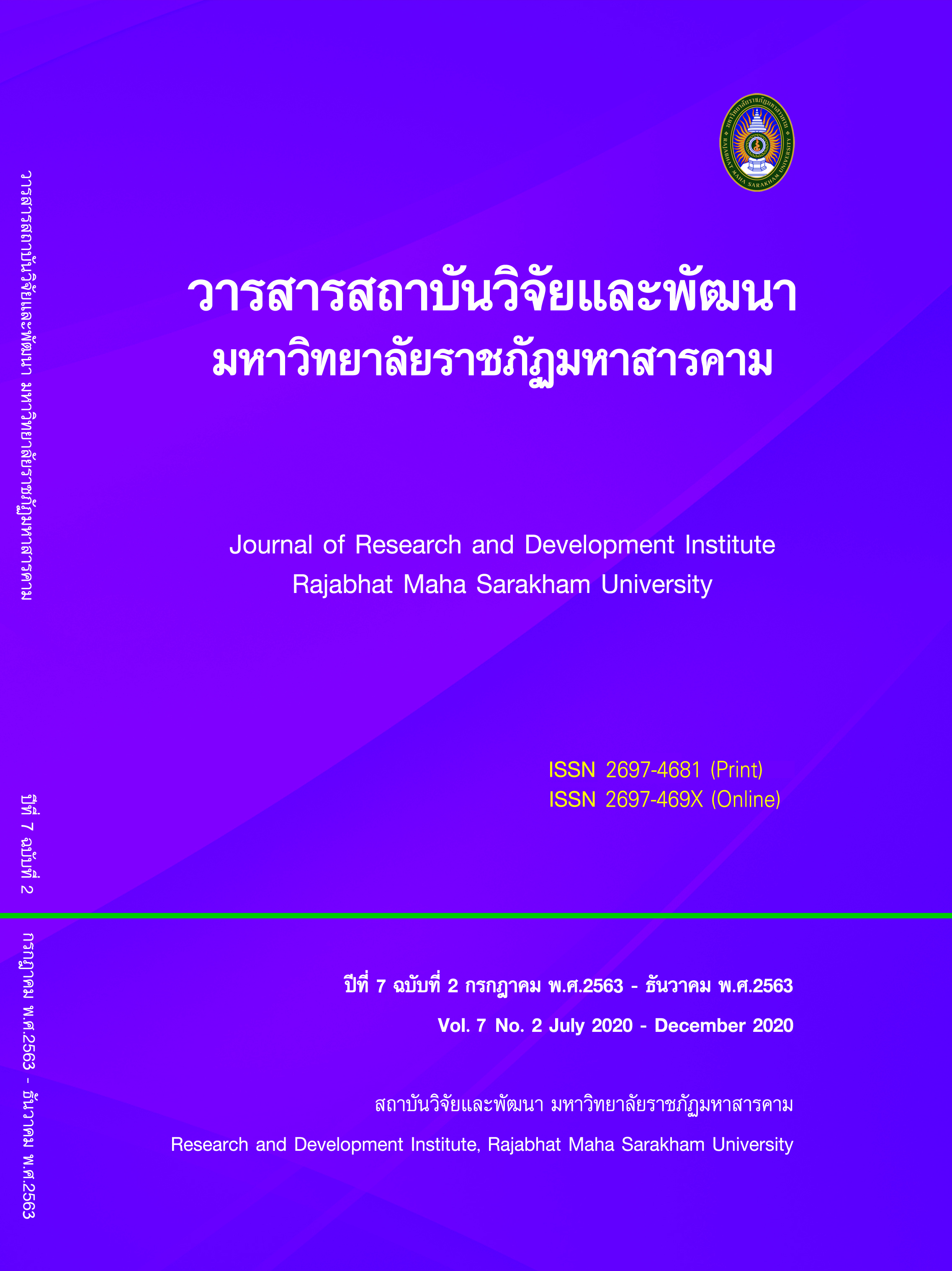Guideline for Development to raise the Standards of Sustainable Nature-based Tourism in Ubon Ratchathani
Keywords:
1) แนวทางการพัฒนา 2) มาตรฐานการท่องเที่ยว 3) การท่องเที่ยวเชิงธรรมชาติAbstract
The purpose of this study were study the Standards of Sustainable Nature-based Tourism in Ubon Ratchathani and suggestion the guideline for Standards of Sustainable Nature-based Tourism in Ubon Ratchathani. Population were people who related to Sustainable Nature-based Tourism in Ubon Ratchathani. Sample used in this research was consisted of 12 peoples, 5 people who related to Sustainable Nature-based Tourism in Ubon Ratchathani and 7 researchers who done a research related to this field. Data were collected through interview. Content analysis were used to analyse data. The result found that 1) there were both side of the Standards of Sustainable Nature-based Tourism in Ubon Ratchathani. A positive side consists of 1. a potential of tourism destination and activities 2. a potential of facilities and 3. a potential of transportation system between province. A negative side consists of 1. a potential of marketing factor 2. a potential of media relation 3. a potential of establishment in term of Lodging business 4. a potential of management 5. a potential of tourism management and 6. a potential of transportation system between tourist destination. 2) The guideline for Standards of Sustainable Nature-based Tourism in Ubon Ratchathani consists of 1. agrressive marketing and establish a story of tourism destination 2. finding a new Marketing channels and new customers 3. development of Information system management and technology 4. development of lodging business 5. collaboration development between all parties and 6. transportation system development for all kind of customers.
References
References
Boonlert Chittangwattana. (2005). Sustainable Tourism Development. Bangkok: Press and Design
Bussaba Sitikarn and Siriwattana Jaima. (2009). Developing roles of local governments in promoting and supporting the readiness of community-based tourist attractions linking routes in the upper northern region of Thailand. Bangkok: Office of the National Research Council of Thailand.
Chalongsri Pimonsompong. (1999). tourism marketing development planning. Bangkok: Kasetsart University.
Chittawon Praditrod. (2014). Components of Tourist Attractions and Tourism Motivation Affecting to Working People’s Decision Making to Travelling in Vicinity Areas. Master of Business Administration Independent Study : Bangkok University.
College of Management Innovation. (2015). Knowledge Management (Research). Rajamangala University of Technology Rattanakosin.
Department of Tourism (2014). Accommodation standards for tourism hotels 1-4 stars. No. 2. Department of Tourism.
Kamonrat Towasakul (2007). Perception Integrated Marketing Communication Influencing to Tourism at Amphawa Floating Market Samut Songkram Province. Master of Business Administration Marketing: Rajamangala University of Technology Thanyaburi.
Ministry of Tourism and Sports. (2014). Summary of tourist situation in August 2014. Bangkok: Department of Tourism : Ministry of Tourism and Sports.
Office of the National Research Council. (2010). National Tourism Research Strategy (2012-2016). Bangkok: Office of the National Research Council of Thailand.
Orawan Kerdjan. (2014). The Participation of Local Community in Eco-Tourism Management at Klongkon Mangove Forest in Samutsongkhram Province.. Master of Arts Thesis: Dhurakij Pundit University.
Payom Dhamabutra. (2006). Teaching materials on the components of tourism. Bangkok: Institute for Conservation Tourism Development, Srinakharinwirot University.
Prayoon Dasri. (2014). “Destination quality standard survey for pang-si-da national park, Srakaew province”, International Thai Tourism Journal, 10 (2) : 36 – 49.
Sasikan Kulwanich. (2008). Promotion of tourism in the community: a case study of urban communities, Takuapa Municipality Takuapa District, Phang Nga Province. Master of Public Administration Independent Studies :Khon Kaen University.
Siamrath Online (2018). Department of Tourism Khueang Klang, Ministry of Transport jointly develop a transport network connecting tourism, [Online]https://siamrath.co.th/n/29479.[ 23 September 2018]
Siriphone Souphanthong. (2008). Services marketing mix affecting european tourist decision towards tourism services in Luang Prabang province, Lao People's Democratic Republic. Master of Business Administration : Chiang Mai University.
Sreenath Caichompoo, Bunkiat Caichompoo, and Paweena Preechayakul. (2017). “TOURISM MANAGEMENT INFORMATION SYSTEM OF KHUNG BANGKACHAO AREA, PHRAPRADAENG DISTRICT, SAMUTPRAKAN PROVINCE”, Phranakhon Rajabhat Research Journal, 12 (1) : 90 – 99.
Thailand Institute of Scientific and Technological Research. (1997). Final report on the implementation of tourism policies to preserve the natural system.. Bangkok: Division of Consulting Services, Academic Service Center, Institute of Scientific and Technological Research of Thailand.
Tourism Authority of Thailand. (1997). Actions to formulate a natural tourism policy. Bangkok: Thailand Institute of Science and Technology Research.
Tourism Authority of Thailand. (2000). A study project to create an index to measure the quality of tourist attractions. Bangkok : Tourism Authority of Thailand.
Tourism Authority of Thailand. (2011). Tourism Development and Promotion Plan of the Tourism Authority of Thailand. [Online]: http://thai.tourismthailand.org/ tourismthailand_index/th/
Wilailak Ratanapeantamma. (1997). “Ecotourism Management”, Executives, 17 (April – June): p. 57 - 62.
Yeoman, I., Durie, A., McMahon-Beattie, U., & Palmer, A. (2005). “Capturing the essence of a brand from its history: The case of Scottish tourism marketing”. Journal of Brand Management, 13 (2), 134-147.
Downloads
Published
How to Cite
Issue
Section
License
Articles that are published are copyrighted by the authors of the articles







